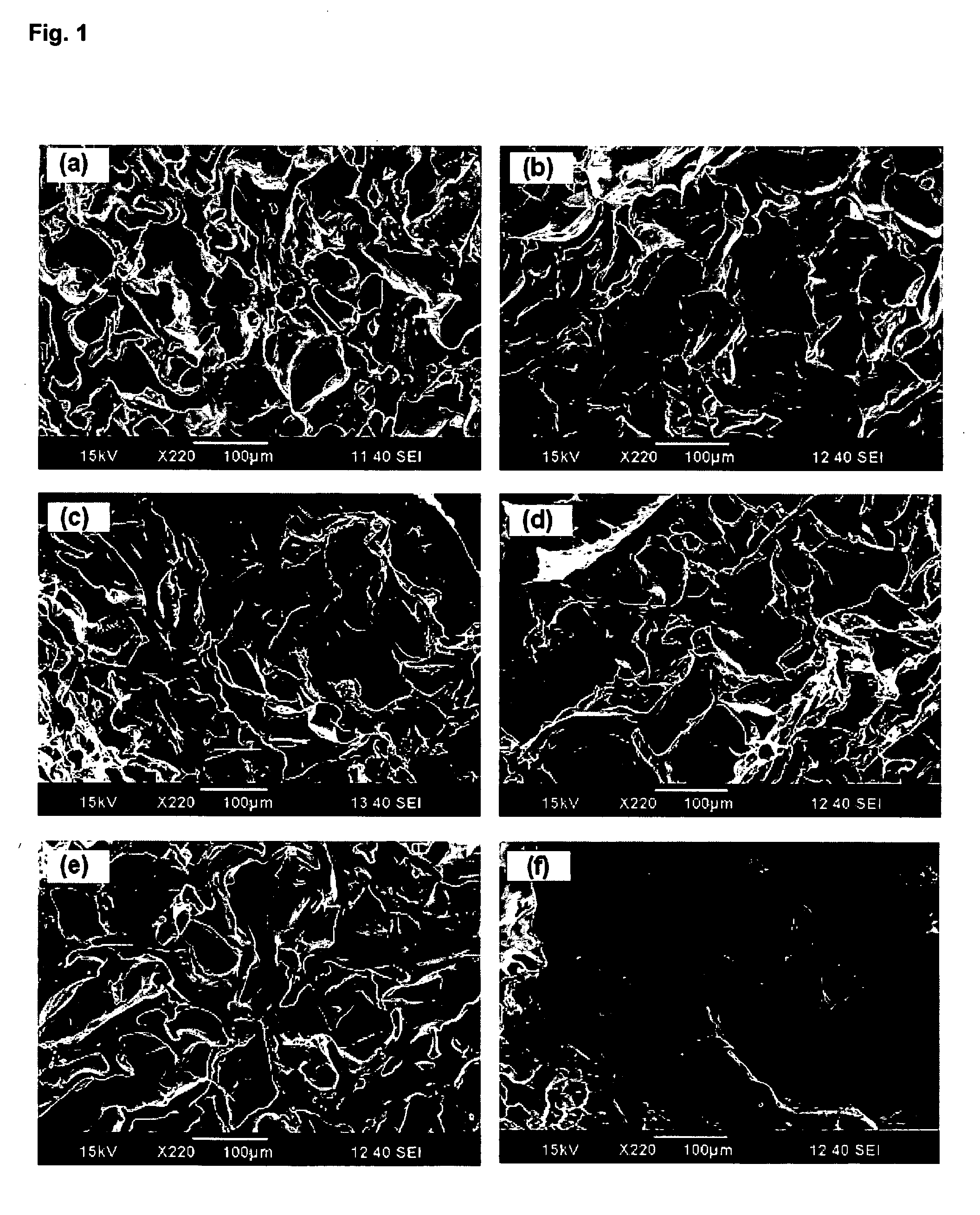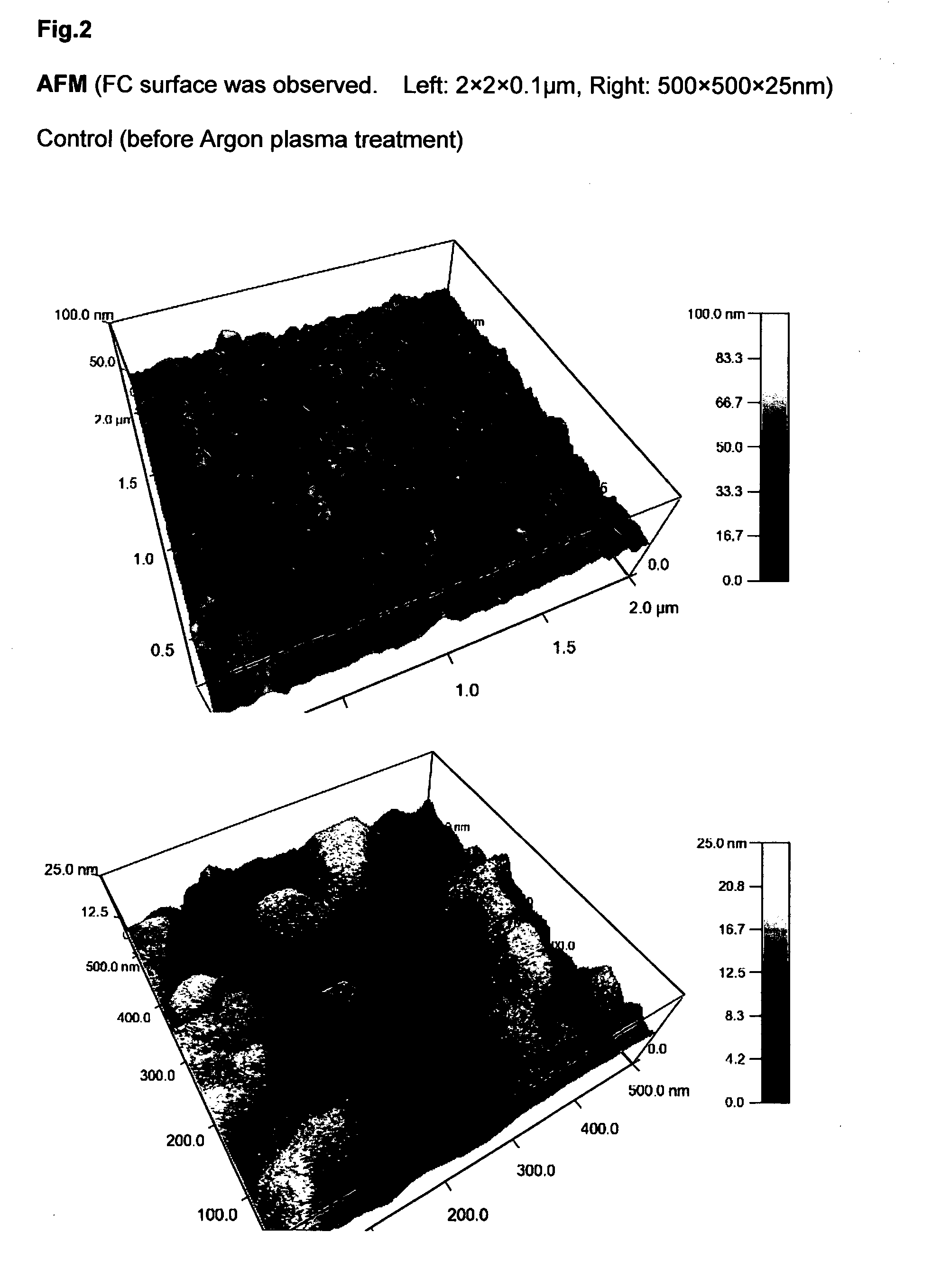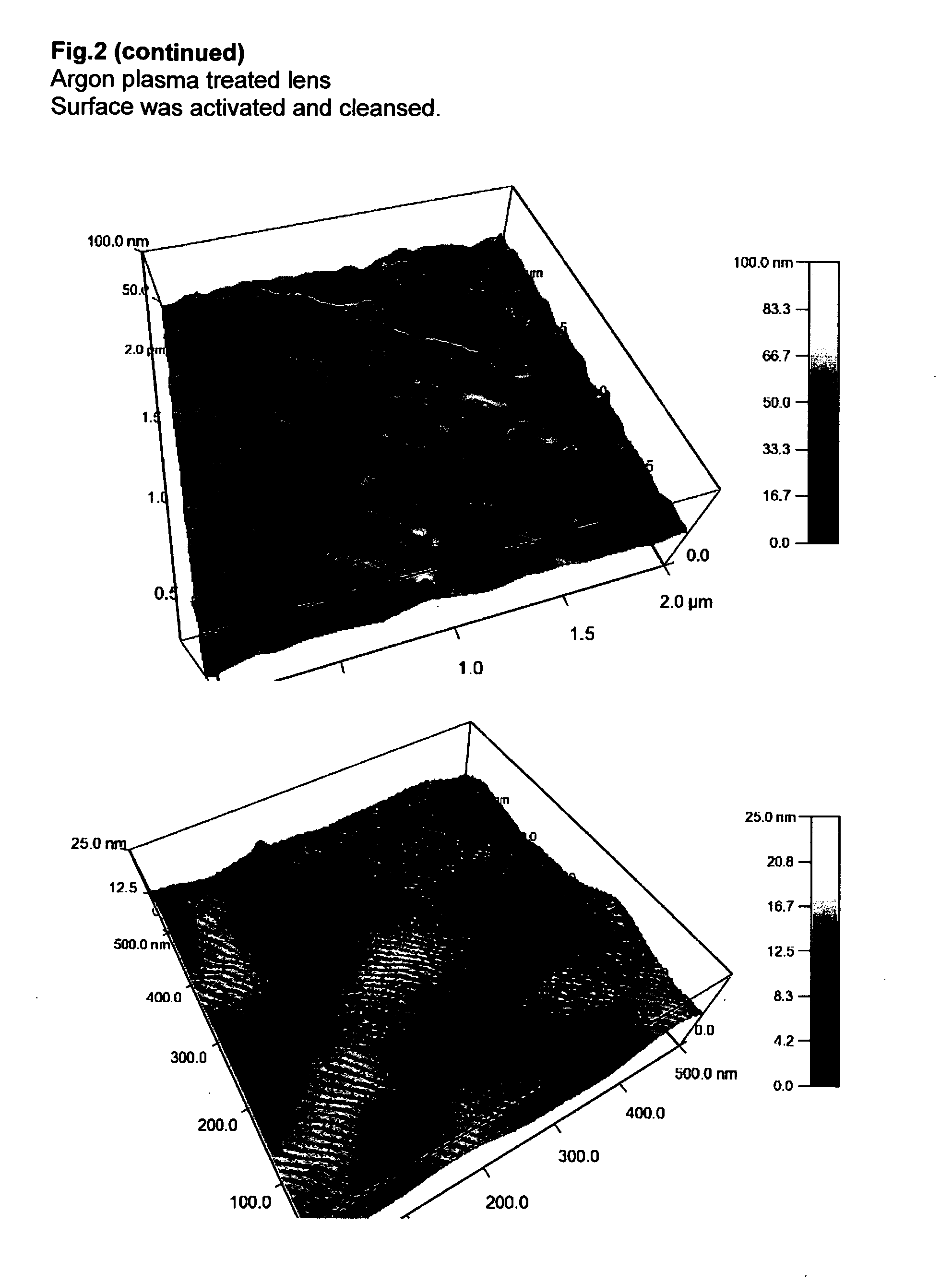Chitosan hydrogel derivatives as a coating agent with broad spectrum of antimicrobial activities
- Summary
- Abstract
- Description
- Claims
- Application Information
AI Technical Summary
Benefits of technology
Problems solved by technology
Method used
Image
Examples
synthetic example 1
Preparation of Chlorofunctionalised PEG Acrylate
[0029]PEG monoacrylate (2.36 ml, 7.06 mmol), with a number average molecular weight of 375, was dissolved in 100 ml toluene and treated with chloroacetylchloride (2.25 ml, 28.24 mmol). The mixture was then heated under reflux for 24 hours. After this time, the solvent and volatiles were removed by evaporation and the residue was dissolved in methylene chloride (150 ml). The solution was stirred over potassium carbonate and filtered. The solvent was removed through evaporation and after washing with hexane, the product was obtained and dried, and used without further purification.
[0030]1H-NMR (300 MHz, CDCl3), δ: 3.5-3.7 (—O—CH2—CH2—O—), 4.1 (Cl—CH2—COO—), 5.7 (—CH═CH2), 6.0, 6.2 (—CH═CH2)
[0031]13C-NMR (300 MHz, CDCl3), δ: 63.6-69.0 (—O—CH2—CH2—O—), 128, 131 (—CH═CH2), 166 (—OCO—CH═CH2), 167 (Cl—CH2—COO—)
synthetic example 2
Preparation of Trimethylammonium Chitosan
[0032]Chitosan (1 g) was added to N-methyl-2-pyrrolidinone (50 ml) and treated with 1.5 N NaOH solution (15 ml). The mixture was stirred for 30 min at 50° C. Sodium iodide (1.08 g) and methyl iodide (11.2 g) were then added to the solution, which was then stirred for 24 hours at 50° C. The reaction mixture was then filtered to remove the insoluble material, and the filtrate was then precipitated into a large excess of acetone and filtered. The resulting product collected by filtration, and dried under vacuum.
[0033]1H-NMR (300 MHz, D2O), δ: 1.95 (—NHCOCH3) 3.33 (—N+CH3), 3.4-4.1 (chitosan-H-2-6)
synthetic example 3
Preparation of Trihexylammonium Chitosan
[0034]Trihexylammonium chitosan was prepared in the same manner as Synthetic Example 2 except for changing from methyl iodide (11.2 g) to hexyl bromide (13.0 g).
[0035]1H-NMR (300 MHz, D2O), δ: 0.74 (—N+CH2CH2(CH2)3CH3), 1.19 (—N+CH2CH2(CH2)3CH3), 1.25 (—N+CH2CH2(CH2)3CH3), 1.95 (—NHCOCH3) 3.07 (—N+CH2CH2(CH2)3CH3), 3.4-4.1 (chitosan-H-2-6)
PUM
| Property | Measurement | Unit |
|---|---|---|
| Hydrophilicity | aaaaa | aaaaa |
| Antimicrobial properties | aaaaa | aaaaa |
| Biocompatibility | aaaaa | aaaaa |
Abstract
Description
Claims
Application Information
 Login to View More
Login to View More - R&D Engineer
- R&D Manager
- IP Professional
- Industry Leading Data Capabilities
- Powerful AI technology
- Patent DNA Extraction
Browse by: Latest US Patents, China's latest patents, Technical Efficacy Thesaurus, Application Domain, Technology Topic, Popular Technical Reports.
© 2024 PatSnap. All rights reserved.Legal|Privacy policy|Modern Slavery Act Transparency Statement|Sitemap|About US| Contact US: help@patsnap.com










